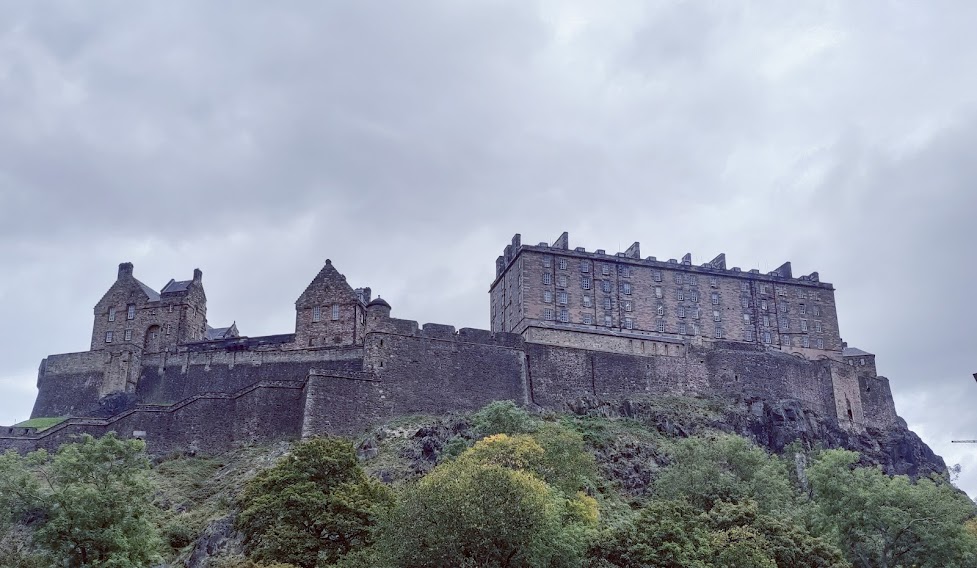
Edinburgh: Inspiration for a city
The iconic Edinburgh castle can be seen from many different angles around the city over which it towers.
This month, for my birthday, I visited my favourite UK city, Edinburgh in Scotland. It was also the city that inspired the fictional Vanar, the capital of Candesa in the Five Realms. One street in particular played a big part in how I visualised Monarch’s Mile, the main street in Vanar. If you’ve ever visited Edinburgh, you’ll know the Royal Mile as the main historical thoroughfare in Old Town.
The Royal Mile climbs from Holyrood Palace in the east, up to Edinburgh Castle in the north. It’s a cobbled thoroughfare that boasts many historic sites including St Giles Cathedral, John Knox’s house, and the Real Mary’s King Close (a look into medieval life underground). It climbs quite steeply to Castle Rock, the highest point in the city centre. As Edinburgh has a magical feel, it’s not a stretch to picture it when creating a magical capital in a fictional world. I’m sure it has appeared in many novels, and Victoria Street was reputedly the inspiration for Diagon Alley in J.K. Rowling’s Harry Potter novels.
The inspiring historic beauty of Royal Mile, Edinburgh.
Below: Victoria Street, Edinburgh. The inspiration for Diagon alley?
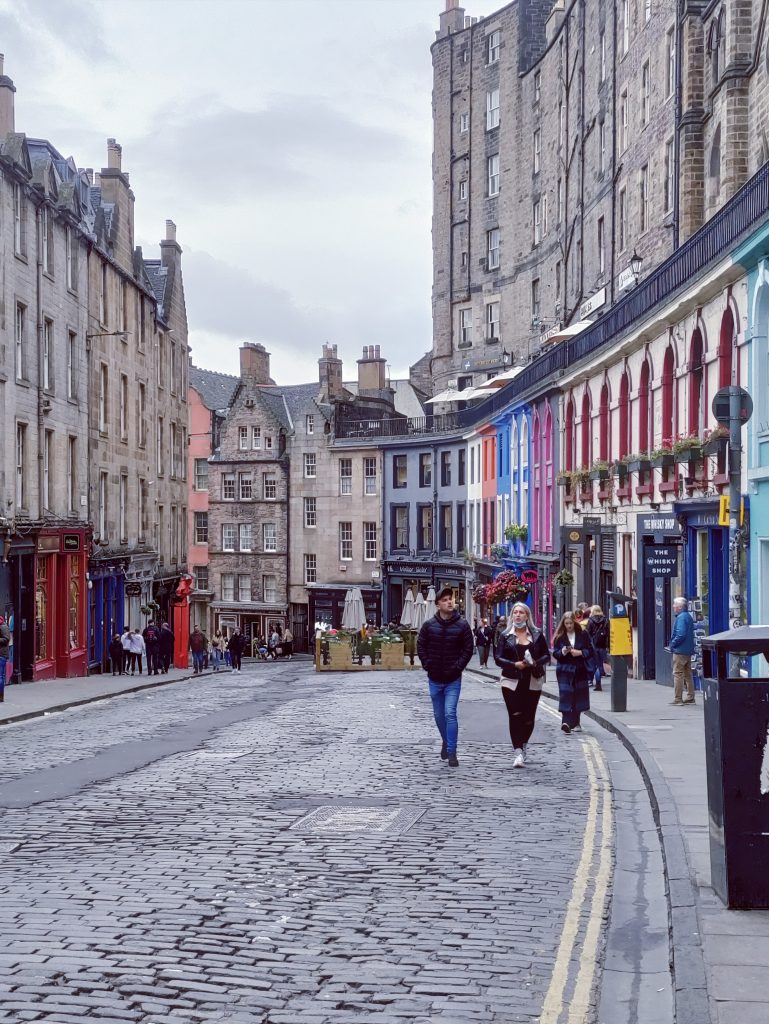
Edinburgh is a city that I am still getting to know. Its historic beauty was the first thing I noticed. There are many old buildings and a long history of settlement dating back to the Bronze Age (3300 BC to 1200 BC) although in Cramond northwest of Edinburgh city, traces of human settlement go back to the Mesolithic period (8500 BC). Additionally, Edinburgh is built on the site of a volcano, now mostly eroded but still visible in places: Castle Rock on which the castle is perched is a volcanic plug, as well as Calton Hill, and Arthur’s Seat was the main volcanic peak. The volcano is thought to have been active around 340 million years ago.
The centre of Edinburgh consists of an Old Town and New Town. Old Town dates back to medieval times and boasts buildings from many periods, but is a good example of reformation architecture, while New Town is an exemplar of Georgian design and the best preserved and most extensive example in the UK. It has UNESCO World Heritage Status https://ewh.org.uk/trails/athens-of-the-north/
St Giles Cathedral (right) on Royal Mile, Edinburgh. The statue is Sir Walter Scott, Scottish novelist, poet and playwright.
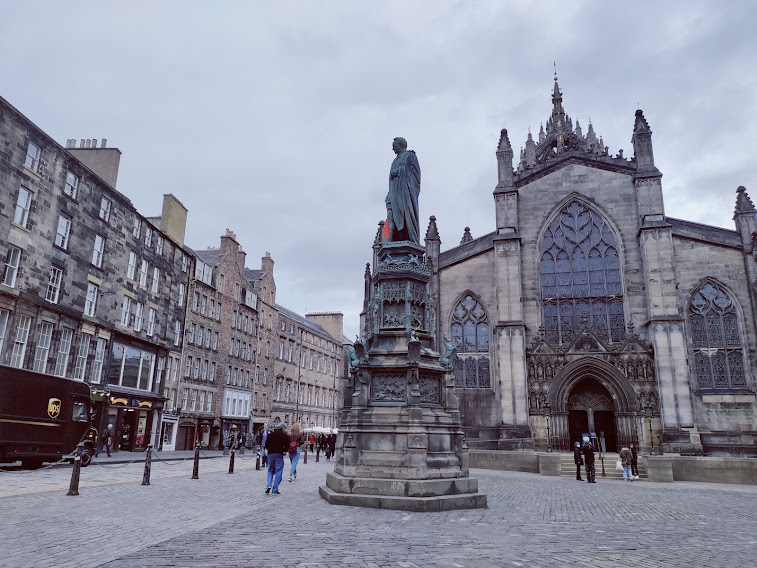
Below: Royal Mile looking north toward the castle
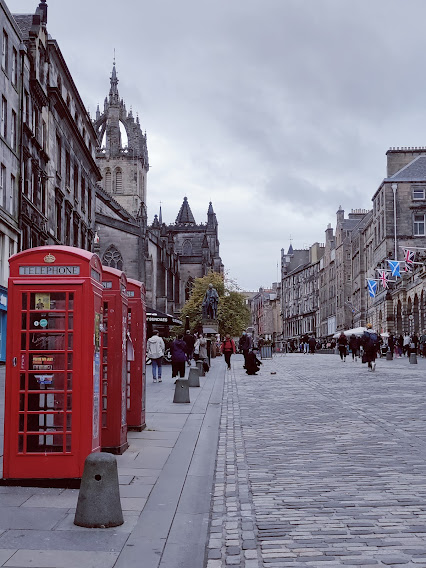
As well as Royal Mile, I also used part of Edinburgh University as the image in my mind when writing about a part of the fictional Vanar University. You may have seen the Divinity School’s entrance quadrangle before. I like its rather spooky towers and turrets and it inspired Argent’s Quadrangle, the entrance to Vanar University where the administration offices and Office for Shade Monitoring are located. When I visited there was work going on there, so I couldn’t quite get the picture I wanted, but I took some anyway. See below.
School of Divinity, New College, University of Edinburgh.
Next time I visit Edinburgh, I intend to go on the St Mary’s Close tour. An underground community that was sealed off during the Plague and only recently reopened for tourists. It’s meant to be haunted. 600 people reputedly died down there, about half of all its residents at the time. To learn more about this there’s an interesting article here at Spooky Scotland: https://spookyscotland.net/black-death/
In next month’s location blog, I’ll share with you the place which inspired the main campus of Vanar University of Magic, and its red stone buildings. Clue: It’s in another beautiful historic city, this time in England.

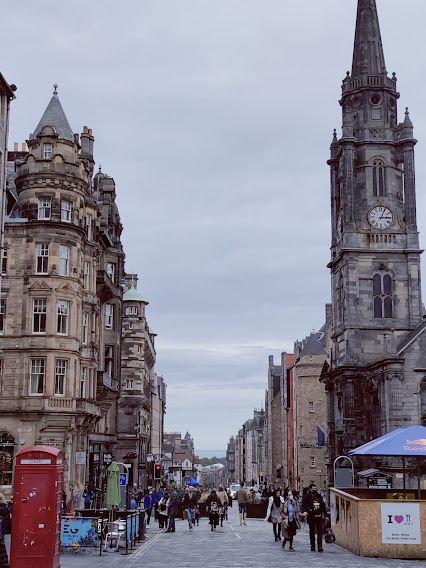
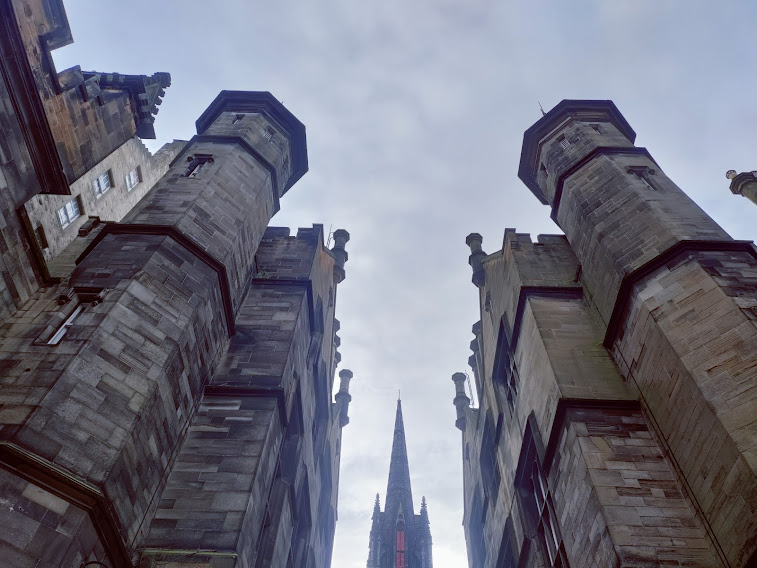


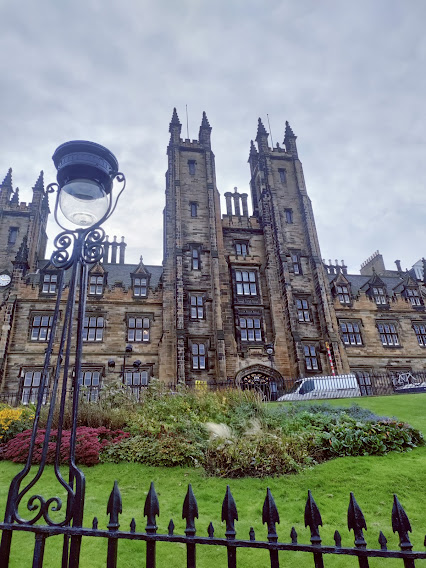

Recent Comments